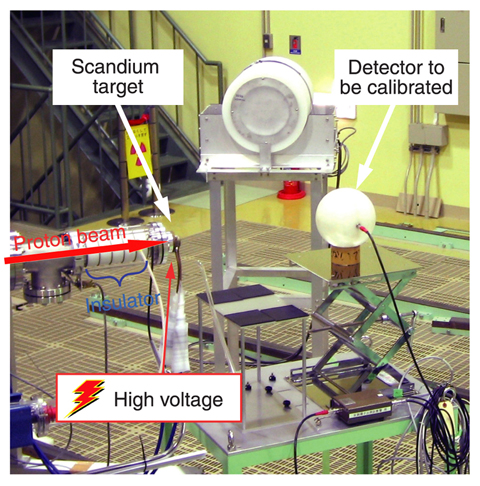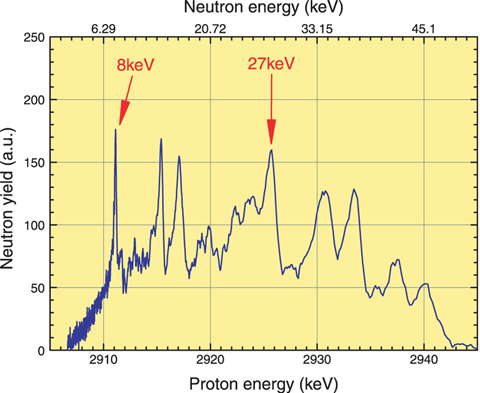
Fig.14-4 Setup in the mono-energetic neutron calibration fields

Fig.14-5 Relative neutron yield generated by the 45Sc(p,n)45Ti reaction as a function of the incident proton energy
Neutron dosimetry is distinctive in that its measurement energy range is very wide, from thermal to a few tens of MeV neutrons. As the sensitivity of conventional neutron detectors largely depends on incident neutron energy, it is necessary to measure this energy dependency precisely using mono-energetic neutrons. Therefore, we are developing mono-energetic neutron calibration fields in the energy region from a few keV to 20MeV. There were no facilities in Japan which could measure the dependence of sensitivity on energy in the keV region, where the sensitivity of detectors varies greatly, so we developed the 8 and 27keV mono-energetic neutron calibration fields as shown in Fig.14-4. These fields are formed by bombarding a scandium target with a proton beam, causing a 45Sc(p,n)45Ti nuclear reaction, which has a resonance structure. Then the mono-energetic neutrons produced by this reaction are used for the calibration of the detectors.
Fig.14-5 shows the relationship of relative neutron yield and the incident proton energy. The 8keV and 27keV neutrons are generated by precisely adjusting the proton energy to correspond to one of the resonance peaks in Fig.14-5. Even if the incident proton energy diverges by only 1keV from 2911keV peak, the 8keV neutrons are not generated. The proton energy must be adjusted within an accuracy of 1keV, but such fine-tuning by controlling the acceleration voltage of the accelerator is difficult. Thus, we developed a target voltage control system which can quickly adjust the proton energy to a resonance peak by applying voltage to the target as seen in Fig.14-4. The magnitude of this voltage can be remotely controlled with a computer in the control room. This system achieves stable and reliable generation of the 8keV and 27keV neutrons.
In this way, fields of 8keV and 27keV mono-energetic neutrons making possible the finest calibration in the world have been developed. These fields will make calibration of neutron detectors in the keV region possible.